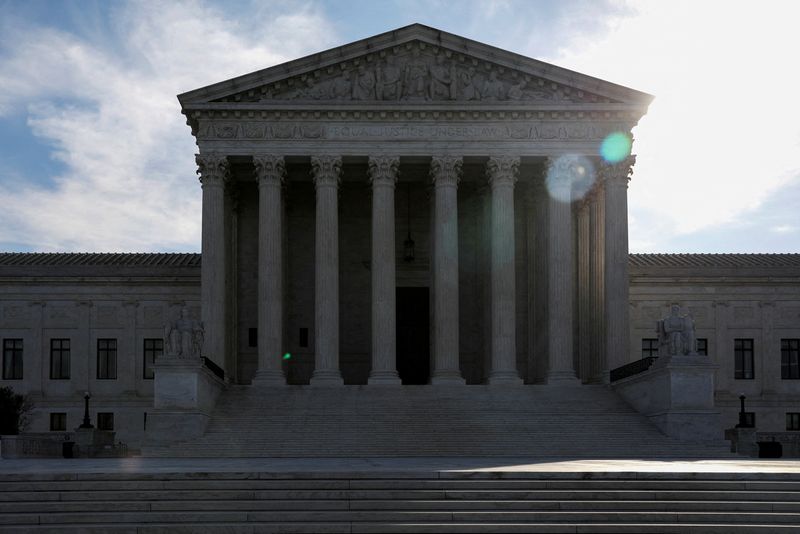By Lawrence Hurley and Andrew Chung
WASHINGTON (Reuters) -The U.S. Supreme Court on Wednesday allowed the use of a map configuring Wisconsin's congressional districts for this year's elections drawn by Democratic Governor Tony Evers, giving a boost to efforts by President Joe Biden's party to retain control of the U.S. House of Representatives.
The justices turned away a Republican bid to block the map drafted by Evers and approved by the Wisconsin Supreme Court setting boundaries for the state's eight U.S. House districts after the governor vetoed one made by the Republican-controlled legislature he deemed unfairly skewed against Democrats. The emergency request to the justices was made by five Republican U.S. House members.
The court also granted a Republican request to block new maps for Wisconsin's state legislature, which were also drawn by Evers and had increased the number of state Assembly districts with a majority of Black voters from six to seven. The court sent that case back to the Wisconsin Supreme Court and ordered it to adopt new maps laying out the various districts. Two liberal justices, Sonia Sotomayor and Elena Kagan, dissented from that decision.
Wisconsin party primary elections are scheduled for Aug. 9, with the general election on Nov. 8.
The Supreme Court on March 7 rejected similar efforts by Republicans to block U.S. House district maps in North Carolina and Pennsylvania.
At the national level, Republicans are seeking to erase the slim majorities in both chambers of the U.S. Congress held by Biden's fellow Democrats. Even with the Wisconsin decision, Democrats face a strong risk of losing their House majority considering Biden's slumping popularity in opinion polls and the large number of retirements by incumbent Democrats.
Democrats and other critics have accused Wisconsin Republicans of abusing their control over the state legislature to manipulate electoral maps to maximize the number of districts in which Republicans have a majority voters.
The Wisconsin electorate is closely divided between the two parties. Election experts consider Wisconsin's electoral maps among the country's most heavily gerrymandered, or designed to give one party an electoral advantage.
In the congressional case, Republican lawmakers challenged part of a March 3 Wisconsin Supreme Court ruling that adopted a map proposed by Evers within constraints set by an earlier ruling. The map drawn by Evers still favors Republicans, although not as much as maps proposed by Republican state legislators. Among Wisconsin's House districts, Republicans currently hold five and Democrats three.
In the dispute over districts in the state Assembly, the lower house of the bicameral legislature, Wisconsin's high court concluded that a seventh majority-Black district would be permissible under the federal Voting Rights Act, which prohibits racial discrimination in voting and diluting the electoral clout of racial minorities.
The Wisconsin legislature appealed that decision to the U.S. Supreme Court alongside four voters represented by the Wisconsin Institute for Law & Liberty, a conservative advocacy group.
The justices faulted the Wisconsin court for improperly analyzing whether the new state Assembly districts would unlawfully sort voters on the basis of race in violation of the U.S. Constitution's 14th Amendment guarantee of equal protection under the law.

Sotomayor, in her dissent, criticized the court majority for issuing such a decision on a preliminary "emergency" basis instead of following full litigation over the issue.
"This court's intervention today is not only extraordinary but also unnecessary," Sotomayor said.